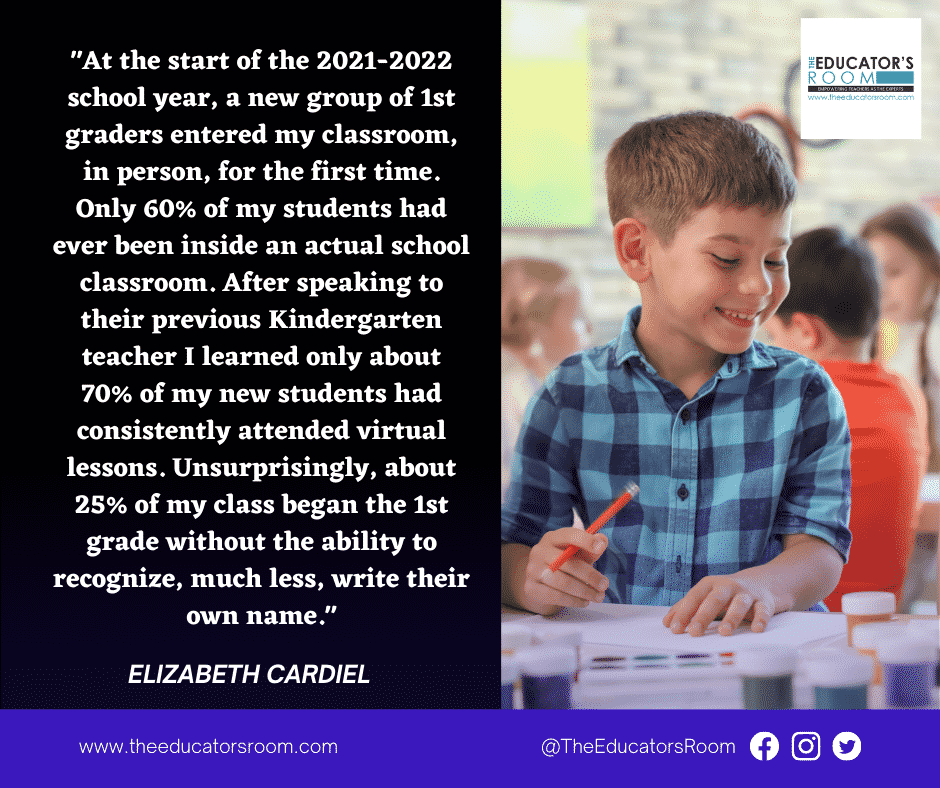By Elizabeth Cardiel
After teaching for only three years, I was incredibly grateful to find a position in a bilingual 1st-grade classroom. Just a few months later the world was sent into quarantine and the profession of teaching was changed forever.
My grade-level team and I had planned and brained stormed on the best ways to begin the school year. Although we did anticipate the need to focus on social development, the reality of this need was underestimated.
At the start of the 2021-2022 school year, a new group of 1st graders entered my classroom, in person, for the first time. Only 60% of my students had ever been inside an actual school classroom. After speaking to their previous Kindergarten teacher I learned only about 70% of my new students had consistently attended virtual lessons. Unsurprisingly, about 25% of my class began the 1st grade without the ability to recognize, much less, write their own name.
Besides academic struggles we faced post quarantine, the social-emotional learning was beyond what my district, school admin team, or I anticipated.
Having to return to early childhood learning, I had to set academic learning aside. Basic social learning was as foreign to some of my students as a classroom was. From learning to wait your turn to learn how to walk in a line, to how to pick up a pencil and write a letter. Basic skills were the first 30 days of my school year. Eventually, I did begin to actually teach academics, but now at the mid-year mark, I feel the pressure more than ever before.
Our monthly progress monitoring data meetings have slowly transformed into weekly data collaborations. Like many of my colleagues, I find myself feeling overwhelmed with such high expectations placed on us, especially in the midst of a monumental teacher shortage. While simultaneously being underwhelmed by my students’ progress. Reflecting on the last few years of my teaching career I see myself leaning away from the curriculum our public school district pushes on us and more towards a play-based form of learning.
The University of New Hampshire defines play learning as “specifically guided play, [that] promotes children’s optimal development across domains and results in greater learning and early childhood outcomes.” With this in mind, I came to the conclusion that taking my students’ needs, in the classroom, should be my first priority as a teacher. And this should rain truly every school year, but especially this school year.
Teaching has always been challenging. Teaching in a post-quarantine classroom has elevated these challenges and, in fact, presented novel challenges to our profession. If this year has taught us anything, it is to be empowered to make decisions based on our student needs and do what we, as teachers, believe is best for our students and ourselves. At times being a good teacher means advocating for others and adapting to challenges.





